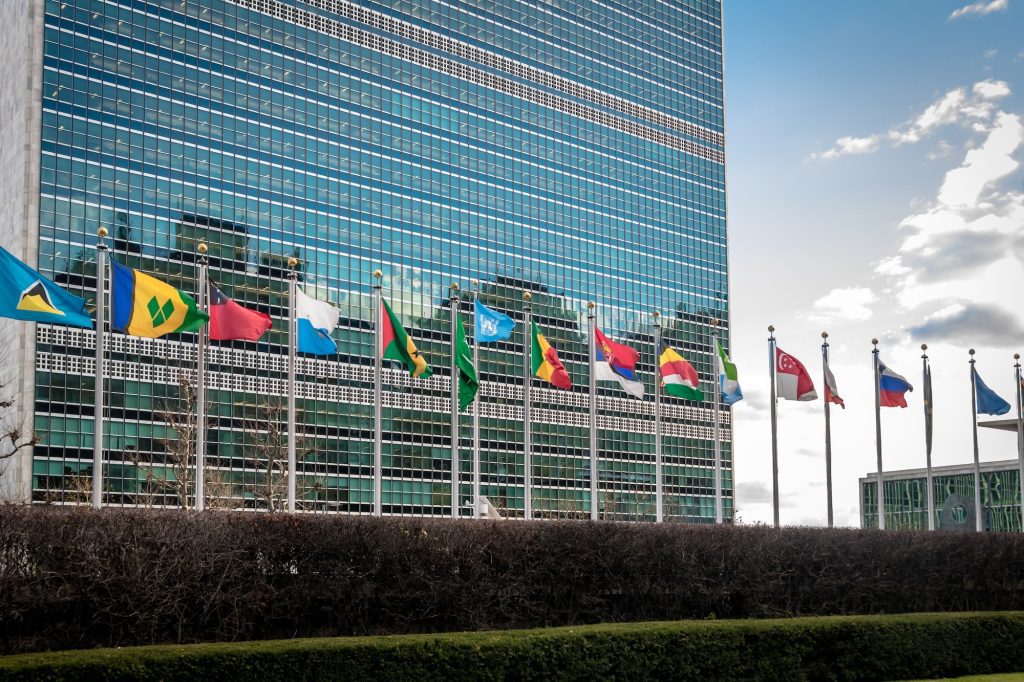UN General Assembly adopts first-ever resolution on AI
The adoption of the first UN resolution on AI could mark a key stride towards fostering a global framework that promotes the responsible and inclusive utilisation of this transformative technology, underscoring the imperative of aligning AI advancements with the collective welfare of humanity.

The General Assembly approved the first UN resolution on AI on 21 March. Backed by the United States and supported by 123 countries, the resolution underscores a global commitment to harnessing AI for collective benefit while ensuring adherence to human rights and that it is ‘safe, secure and trustworthy.’
Historic support and significance
The resolution was adopted unanimously without a vote, with a broad consensus among all 193 UN member nations regarding the principles governing the utilisation of AI technology. US Vice President Kamala Harris hailed the resolution as a historic step towards guiding the safe deployment and advancement of AI, emphasising its imperative alignment with the public interest and the protection of individuals from potential harm. Months of collaborative efforts culminated in the formulation of the resolution, with the United States spearheading negotiations alongside over 120 countries, including geopolitical rivals such as Russia and China. Ambassador Linda Thomas-Greenfield highlighted the consensus achieved, stating that it reflected a unified commitment by UB member states to advancing technological progress.
Bridging the digital divide
At the core of the resolution lies a commitment to bridging the digital gap between affluent nations and developing economies. It endeavours to ensure equitable participation in AI discussions and equip developing countries with the requisite technology and capabilities to leverage AI’s myriad benefits. These benefits range from disease detection and flood prediction to agricultural assistance and workforce development.
Addressing urgent concerns
Recognising the rapid evolution of AI, the resolution underscores the urgency of global consensus on fostering safe, secure, and trustworthy AI systems. It acknowledges the evolving nature of AI governance and advocates for further deliberations on viable governance approaches, emphasising the symbiotic relationship between innovation and regulation.
Promoting responsible AI practices
While non-binding, the resolution serves as a pivotal guidepost for responsible AI practices. It encourages stakeholders across diverse sectors, including governments, tech communities, civil society, academia, and media, to develop and uphold regulatory frameworks conducive to the safe deployment of AI. Moreover, it cautions against improper or malicious AI utilisation, stressing compliance with international law and the safeguarding of human rights throughout AI’s life cycle.
Toward sustainable development
Aligned with the UN’s sustainable development goals for 2030, the resolution envisions AI as a catalyst for progress in critical areas such as eradicating hunger and poverty, enhancing global health, ensuring universal education, and promoting gender equality. It encourages UN member states to collaborate in facilitating access to digital transformation and secure AI systems, underscoring the paramount importance of upholding human rights and fundamental freedoms in AI development and deployment.
Why does it matter?
For the first time, the UN-level resolution urges all countries, regional and international organisations, tech communities, civil society, the media, academia, research institutions, and individuals to develop and support regulatory and governance approaches and frameworks for safe AI systems. The text cautions against inappropriate or malicious design, development, deployment, and use of AI systems without adequate safeguards or in a manner inconsistent with international law. The resolution also stresses the importance of respecting human rights and fundamental freedoms through the life cycle of AI systems.
